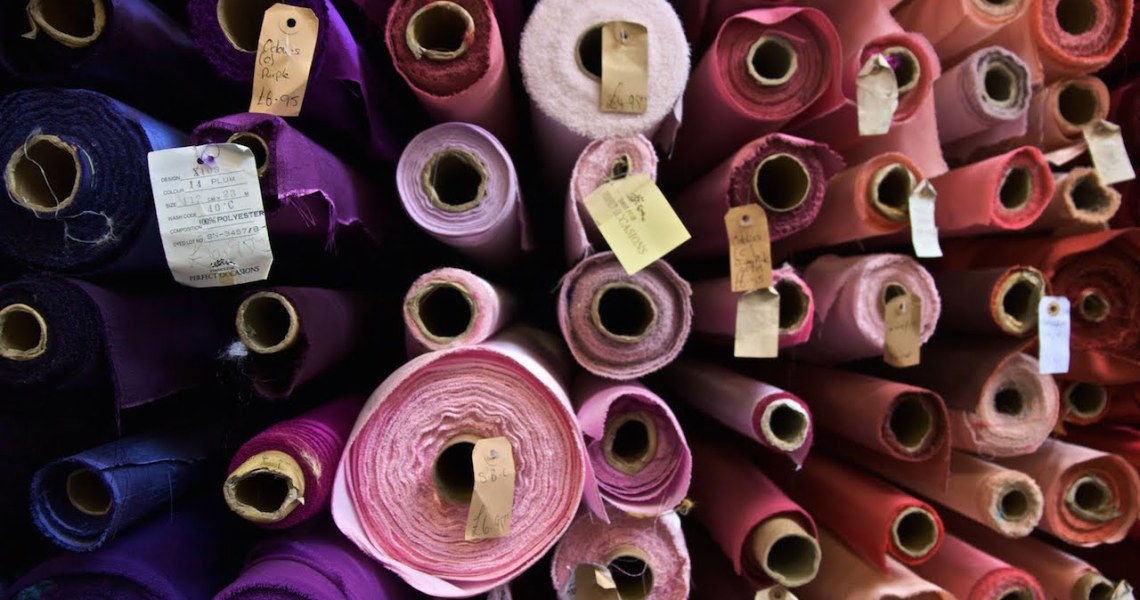One of the toughest things about starting a fashion brand is securing a manufacturing partner. Factories often require minimum order quantities to make a new partnership worth their while, so a brand with only enough money to manufacture small runs of initial products will have a hard time finding a factory. And, unfortunately, the pandemic has only made those minimums higher.
Shortly after the pandemic began, factory minimums tended lower in some areas like the U.K. as large companies canceled orders. But those orders are now climbing higher than ever, according to Yossi Nasser, CEO of intimates manufacturer Gelmart. He said that factories around the world have been strained due to shutdowns and having to lay off staff, so they now only want to work with big partners that place big orders. In the last year, he’s seen factories raise minimums from the standard number of 250 pieces per color to upward of 700 per color.
“The No. 1 [issue] is capacity,” Nasser said. “When a factory’s capacity is strained, they only want the sure thing — the customers they have the most profitable or highest volume relationship with.”
Nasser said Gelmart does more than 50% of its manufacturing itself, but it increased that amount in the last year to make up for its third-party factories raising their minimums.
Donny Greenberger, Gelmart COO, echoed Nasser’s comments, saying that factories in China are raising minimums, refusing business and, in general, being much pickier about who they work with.
“Factories just seem to be less hungry than they were in the past,” Greenberger said. “With the value of the USD to RMB going down and the cost of air freight being so high, factories are much more risk-averse than in the past. When they are not as hungry for the business, they will increase the cost and the minimums to dissuade you or make it more than worth their while if you decide to go forward with an order.”
China made up about 40% of all fashion and textile manufacturing in the world in 2020.
Ad position: web_incontent_pos1
This has made it harder for small designers to find the right partner. Sergio Scott, designer and founder of Chicago-based streetwear brand Nineteenth Letter, said that even when he could find a partner, he had no pull to negotiate materials or quality, and was frequently dissatisfied with the results he received from partners in China.
There is at least one method that has helped some small brands get around high minimum orders: community pooling, or grouping several orders together into one manufacturing job. If multiple brands all require the same materials and colors, some factories will allow them to pool their needs into, for example, one large order of blue cotton or denim. However, large minimums on specific SKUs are often required.
Scott said he’s been able to get smaller runs of product made at big factories in China through community pooling with a retail partner, streetwear marketplace Trill. Trill specializes in cultivating small designers and brands, helping them produce at scale and selling their goods on its online marketplace.
Trill co-founder Rahul Tiwari has manufacturing partners in China and Bangladesh, which he has negotiated deals with to allow multiple small designers to place bulk orders together. This helps the factories get the guaranteed order sizes they want while allowing smaller designers access to a large and high-quality manufacturer. The involved factories find this method appealing because they can get an order for more than 2,000 units per color, far above their 600 unit minimum.
To help cut down on complications, Trill organizes those joint orders based on material. If several designers are making denim, the styles are grouped together into a single order. Scott typically looks to order around 150 pieces per color, which falls short of the common 600-700-piece order minimum. Both Scott and Tiwari said order minimums have increased in the last year, but community pooling has let them easily meet those minimums.
Ad position: web_incontent_pos2
“Individually, a lot of these brands don’t do enough business to get the attention of a big factory,” Tiwari said. “But a couple dozen brands together ordering 2,000 pieces all at once gets their attention.”
Trill carries around 80 brands, 60% of which have found manufacturing partners through joint negotiation.
But not every brand has access to a mediator like Trill. And until factory minimums naturally come down, as more factory capacity opens up and manufacturers feel confident enough to take risks, small brands will continue to struggle to get their product made.
“Most of our private label manufacturing is for big partners like Walmart,” Nasser said. “But the way things are right now, unless there’s some other reason to work with a small customer, like we’re incubating the brand or we have a strategic partnership or something, then we’re normally just going to stick the high-volume customers we already have.”




